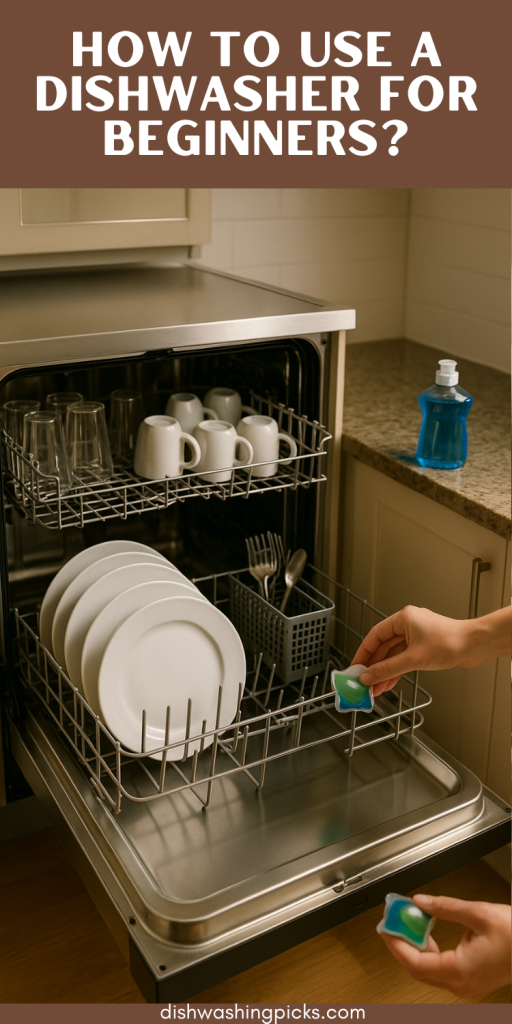
So… You’ve Got a Dishwasher. Now What?
You’ve just moved into a place with a shiny built-in dishwasher—or maybe you’ve been ignoring the one you already have because, well… it looks confusing. No shame. They’ve got buttons, compartments, and those weird rinse aid instructions. What even is rinse aid?
Don’t worry—you’re about to go from “dishwasher rookie” to “kitchen pro” in one casual read.
Let’s break this down step-by-step in plain English, with no tech jargon or pressure. Sound good? Cool. Let’s go.
1. Start with Scraping, Not Scrubbing
First myth we’re busting: You don’t need to fully wash your dishes before putting them in. That’s the dishwasher’s job!
But—and this is a friendly but—you do want to scrape off chunks of food. We’re talking pasta blobs, bones, or that one mystery crust that’s hardened into a fossil.
🧽 Think of it like this: if you wouldn’t want it floating around in a hot bath with your dishes… scrape it off.
No need for soap or pre-rinsing unless the dish has been sitting for days. Scrape, load, and move on.
2. Master the Art of Loading Like a Pro
Dishwashers aren’t just “throw it all in and hope for the best.” A little strategy goes a long way here.
🧺 Bottom rack = heavier stuff
- Plates, bowls, pots, pans (if they’re dishwasher-safe)
- Make sure nothing blocks the spray arm at the bottom
🥄 Top rack = lighter and delicate items
- Cups, glasses, smaller bowls, plastic containers (top rack only!)
- Angle mugs downward so they don’t collect pool water
🍴 Silverware basket = forks down, knives blade-down for safety
- Mix spoons and forks so they don’t “nest” together and stay dirty
- If your basket has compartments, use them—it helps with spacing
💡 Pro Tip: Don’t overlap dishes too much. The water jets need space to spray freely.
3. Detergent 101: Pods, Powder, or Liquid?
Alright, let’s keep it real—there are like five detergent options and they all promise sparkling results. But which one should you use?
💊 Dishwasher pods (or tabs)
- Super convenient. Just pop one into the detergent compartment—done.
- Pre-measured = no guesswork.
- Bonus: Many have built-in rinse aid.
Perfect if you’re into simplicity and not fiddling with powder spills.
🧂 Powder detergent
- Usually cheaper per use.
- Lets you control the amount (good for smaller loads).
- But… easy to over- or under-dose.
💧 Liquid/gel detergent
- Easy to pour, but can be messy.
- Doesn’t always clean as powerfully as pods or powder.
Bottom line? Start with pods if you’re a beginner. They’re low-maintenance and generally get the job done well.
4. Choose the Right Wash Cycle (No Degree Required)
Dishwashers come with all sorts of buttons: “Auto,” “Eco,” “Quick Wash,” “Heavy Duty,” and sometimes even a “Sanitize” mode. Don’t let that intimidate you.
Here’s the TL;DR version:
- Normal: Your go-to for everyday dishes.
- Heavy/Intensive: For pots, pans, or crusty dishes.
- Quick: Fast but not as thorough—good for lightly soiled items.
- Eco: Saves water and energy—takes longer but great if you’re not in a rush.
- Rinse Only: For pre-rinsing if you’re not running a full load right away.
🎯 If you’re unsure? Hit “Normal” and call it a day. It’s designed to work for 90% of your dishwashing needs.
5. Rinse Aid: Optional, But Helpful
Ah yes, the mysterious rinse aid compartment. What even is that?
Rinse aid helps prevent water spots and keeps glassware from looking cloudy. It doesn’t “rinse” your dishes—it actually helps them dry better.
- If your dishwasher has a rinse aid dispenser, fill it once every few weeks.
- If you’re using pods with built-in rinse aid? You can skip this step unless your dishes are still coming out wet or spotty.
💧 PSA: It’s especially helpful if you live in a hard water area.
6. Let the Magic Happen—Then Let It Cool
Once you’ve loaded, added detergent, and selected your cycle, press start and walk away like a dishwashing boss.
When it’s done, let the steam out and give the dishes a few minutes to cool off before unloading. This helps avoid streaks and keeps your fingers from getting singed.
🔥 Bonus tip: Always unload the bottom rack first so any leftover water on the top rack doesn’t drip onto clean dishes below.
Final Thoughts: Dishwashers Aren’t Complicated—Just Misunderstood
Once you’ve run a load or two, it becomes second nature. You’ll wonder how you ever lived without it.
So next time someone says “dishwashers are too much hassle,” you can confidently say: Not if you know what you’re doing.
